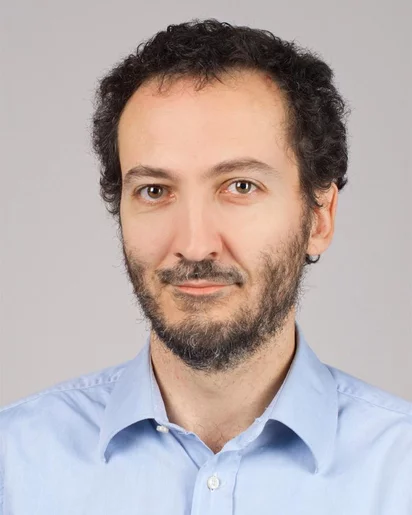Biography
Nicola Casati studied chemistry at the Universita' degli studi di Milano where he also obtained his PhD in Structural Chemistry, discussing a thesis on "Non environmental single-crystal X-ray diffraction", focusing on the high-pressure behavior of molecular solids. After a first post-doctoral position he moved to Diamond Light Source, where he was part, as post-doctoral research assistant, of the team running I15, the extreme-conditions beamline, continuing his research activity on molecular materials at high pressure. He became staff scientist at the Materials Science beamline of the SLS in 2012 and became head of the Materials Science group in 2018, the position he currently holds. Since 2020 he is also part of ANAXAM, the Technology Transfer Centre for Advanced Manufacturing.
Institutional Responsibilities
As group leader, Nicola Casati is responsible for the Materials Science group, including staff, students and visiting scientists. He takes care of budget, supervision and other organizational issues, while scientists in the group have complete scientific independence. He is also responsible for the operation of the Materials Science beamline. With his coworkers he maintains and develops the beamline capabilities, designing the strategic developments needed to address the demands of the Swiss and International scientific community for advanced diffraction experiments. He supports the activity of external users, both academic and industrial. He is also responsible for the Mesquik service, designed for fast access to high resolution powder diffraction measurements.
Scientific Research
Casati Nicola's research focuses on the effects of mechanical forces on the stability of structures and chemical bonding. Two main branches of research stem from this interest.
The first is the investigation of materials under high hydrostatic pressure (several GPa). Under these conditions, the energy of the systems under study are significantly raised and often less-common states of the matter are stabilized, revealing an unusual chemistry. These studies are often ideal and shed light on fundamental aspects of the physico-chemical properties of the materials under study.
The second branch is the study of mechano-chemical reactions, which are happening under less energetic conditions, such as manual or mechanical grinding (typically in a ball-milling setup). These transformations are more relevant for applications, but still not fully explored scientifically. The appeal of such a simple methodology is the avoidance of solvents, with clear economic and environmental benefits. Moreover, reactivity with solid reagents does not always proceed in the same way as in solution, as conditions are not quasi-static, potentially giving a unique route to a desired product.
Selected Publications
For an extensive overview we kindly refer you to our publication repository DORA(link is external).
Selected publications of the last five years:
Pressure-Induced Polymerization and Electrical Conductivity of a Polyiodide, T.Poreba, M.Ernst, D.Zimmer, P.Macchi, N.Casati, Ang.Chem.Intl.Ed., 58(20), 6625-6629 (2019).
The pressure behavior of an iodine rich salt is analysed in detail, showing the formation of infinite polymeric chains. This is proved structurally by X-ray diffraction and electronically by a drop of 9 orders of magnitude in the resistance at high pressure.
Insight in the mechanochemical synthesis and structural evolution of hybrid organic-inorganic guanidinium lead(II) iodides, M.Wilke, N.Casati, Chem. Eur. J. , 24, 17701-17711. (2018).
The mechanochemical formation of GUAnPbI2+n (GUA = C(NH2)3, guanidinium) with n=1-4 is analysed by in situ X-ray diffraction. The intricate reaction paths are described, according to product nucleation and growth speeds. Such reaction paths mirror the complexity of these solid state reactions, a complexity not apparent by the simple analysis of end product, which follows the stoichiometry.
Innovative in Situ Ball Mill for X‑ray Diffraction, V.Ban, Y.Sadikin, M.Lange, N.Tumanov, Y.Filinchuk, R.Černý, N.Casati, Analytical Chemistry, 89 (24) 13176-13181 (2017).
A novel design for a ball mill, allowing higher quality in situ characterization, is described, including a comparison with other in situ devices. This original machinery has been developed at PSI and is available to users of the Material Science beamline.
Putting pressure on aromaticity along with the in situ experimental electron-density of a molecular crystal, N.Casati, A.Kleppe, A.P.Jephcoat, P.Macchi, Nature Communications, 7, 10901 (2016).
This pioneering study is the first experimental electron density determination of a molecular crystal at high pressure. The aromatic molecule under study shows a loss of its aromaticity with a progressive localization of single and double bonds as a function of pressure. The complex experimental protocol to achieve sufficient data quality is discussed in details.
Books
High-Pressure Structural Evolution of Molecular Crystals. N. Casati, in "HIGH-PRESSURE CRYSTALLOGRAPHY: FROM FUNDAMENTAL PHENOMENA TO TECHNOLOGICAL APPLICATIONS", Pages: 161-170 (2010) ISBN 978-90-481-9258-8.


